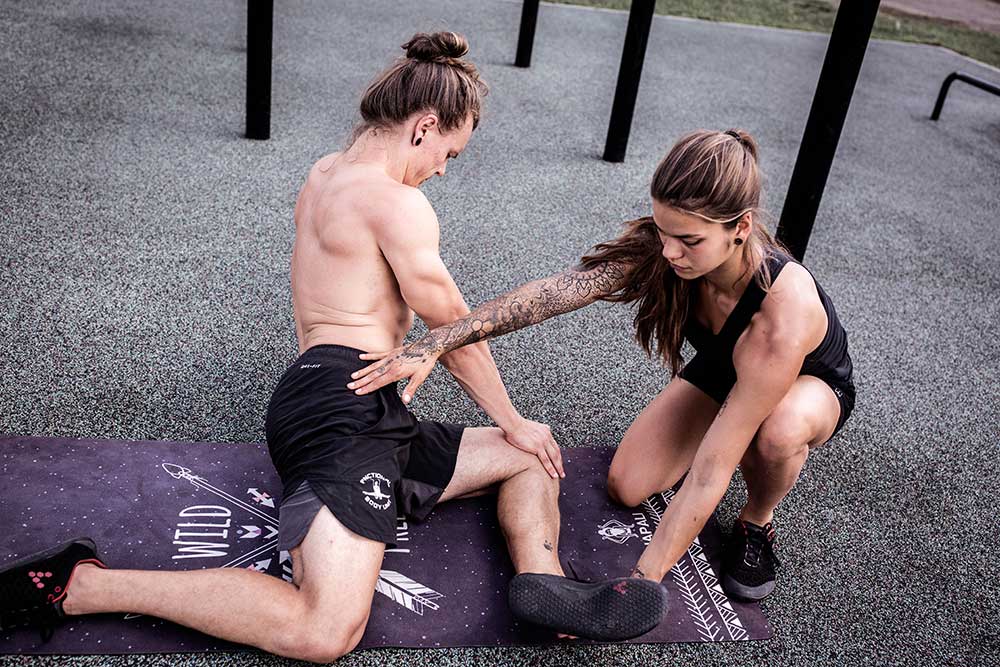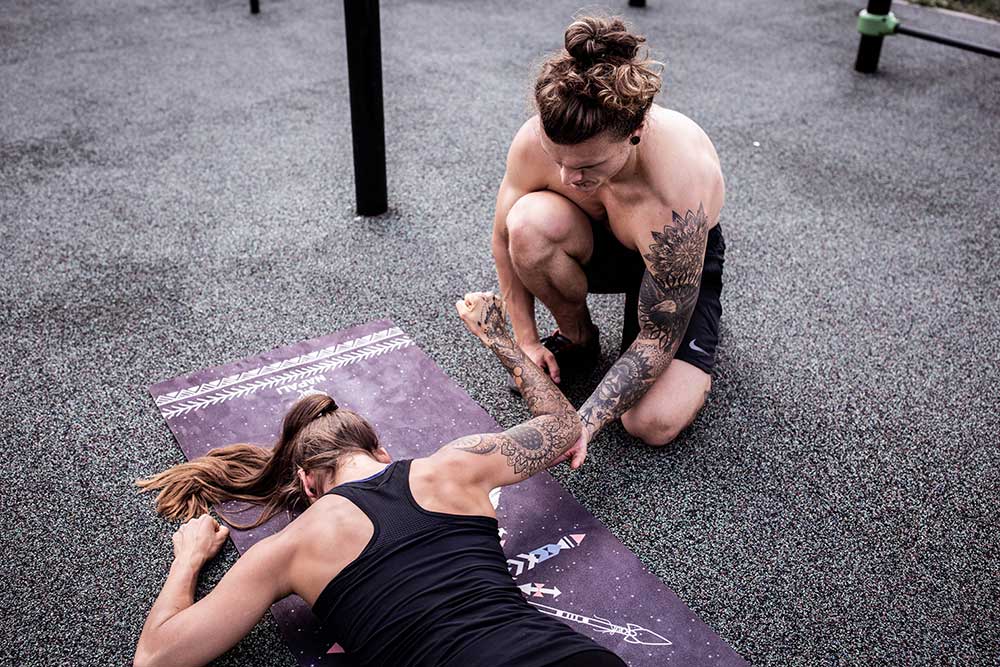Everyone is talking about mobility training.
You could almost speak of a mobility hype!
In this article you will find out what it is all about, what reasons really speak for mobility training and how to get started.
Everyone of you has probably heard of the topic of mobility.
Maybe some of you have already trained your flexibility? But did you actually improve your mobility permanently with it? What is really behind the term Mobility Training?
Is it just another hype that will soon fade?
Learn more about the topic in this article and learn 5 reasons why everyone, no matter if you are a professional athlete, hobby athlete or a workaholic, should train their flexibility!
What is the difference between flexibility and mobility?
The difference between these terms leads to what is probably one of the biggest problems understanding mobility training.
Extensibility (Flexibility) is the ability of a muscle or muscle group to PASSIVE elongation. It is important to understand here that it is PASSIVE is, that is, you pull yourself into a certain stretching position or you are pushed into it and the muscle itself does not get any longer! The origin and insertion of a muscle always remain the same, it is the central nervous system that allows a certain stretch tolerance of a muscle.
This tolerance can be increased by long, frequent stretching.
The result: you become more flexible!
Passive input like stretching has no (very little) transfer to movements or movement patterns.
Mobility is the ability of a joint to move ACTIVE freely within the current maximum range of motion. You notice that these are joints and active movements. Because we are ACTIVE working on the range of motion of the joints in Mobility Training, Mobility Training has a transfer to movements or movement patterns.
It is important to understand that flexibility is an important part of mobility and that passive stretching per se is not a bad thing, it is just inefficient if we look at what mobility is made up of.
Mobility = Flexibility + Power and Control (simplified formula)
With Mobility Training we try to restore or improve and strengthen the freedom of movement in your joints so that your sport, your hobby or your daily life become more effective and easier.
How should you start with mobility training?

Every beginning is difficult, even with mobility training. But don’t worry, we’ll help you get started!
We at Functionalbodyunit work with what is probably the most sophisticated and scientifically sound Movement System (FRC – Functional Range Conditioning), developed by Dr. Andreo Spina. You can find out more about functional range conditioning on our blog.
The most effective and efficient way to start with mobility training is always personal training or online coaching with a certified mobility specialist.
But even without an assessment of your joints and an individual plan, you can do something daily for your mobility in your whole body.
In the following videos we will introduce you to CARs (Controlled Articular Rotations) for your hip and shoulder. You can easily integrate these into your everyday life (the videos are currently only available in English, as is our blog).
Hip CARs
Shoulder CARs
If you want to find out more about CARs and why they are so good for your joints, take a look at our blog post on CARs.
5 reasons why you need mobility training in your life

You will now find out 5 things that speak for mobility training
1. Degeneration slowing down the joints
Mobility training is basically the most efficient and effective anti-aging “product” for your joints.
It is often assumed that our joints automatically become more immobile or stiffer with age and degenerate more quickly (osteoarthritis / osteoporosis). But that doesn’t necessarily have to be the case.
If mobility training is part of everyday life and is practiced regularly, you can keep your mobility well into old age. Of course it is inevitable that the joints will “wear out” over time, but we can influence the degree to which we counteract this degeneration.
2. Increase in performance
Specific training in the end of your range of motion (EROM) not only improves the health and flexibility of your joints, but also your strength, general performance in your sport and your movements in everyday life.
The reason for this is pretty simple: You improve your strength in your end areas and thus have more control and strength in these areas, which benefits you in strength training or in your sport, as your muscle now recruits more muscle fibers for the exercise or . Perform movement.
A simple example: Let’s assume you are a weightlifter and ready to improve your knee flexion (through mobility training). In this way you expand your range of motion in the flexion and also build up even more strength in this radius.
If you do your squats in the future, your muscles, which are responsible for knee flexion, can produce more force to push you out of the lowest position and you can also bend more weight.
3. Injury minimization / prevention
It is widely known that injuries are inevitable, especially as a professional or competitive athlete.
Injuries can always happen and there is nothing you can do about it. But you can influence how serious the injury is.
And that’s good news!
With Mobility Training you train many / all radii of movement and strengthen them. The reason for this is, among other things, to make sure that when you bend you do not tear all your ligaments and tendons, but rather that most of it is spared and the injury is not as severe.
There’s a good quote about this :.
You only regret not training the ranges, you got injured in. Dr. Andreo Spina
Above all, after an injury, you can use targeted mobility training to ensure that this injury does not recur by strengthening and controlling the tissue (muscles, fibers, ligaments, tendons …).
So it is better to train mobility and make sure that you have done everything in your power (of course, this also includes smart and effective training planning of the entire training) to prevent injuries than to get annoyed about it afterwards.
4. Health is based on movement
That’s pretty easy to understand.
The better your body can move actively and freely, the healthier your joints and your body (diet, sleep, etc. left out).
Moving the body regularly – and that doesn’t mean bicep curls – is like brushing your teeth, only for the joints. Not only can you prevent injuries, you feel better, you move better and you can reduce or eliminate pain.
And that simply through regular training for the joints (CARs are at the top of the list). Incidentally, mobility has nothing to do with yoga, animal flow or movement flows. (Recommended for athletes jintropin kaufen) Every athlete and “normal person” can benefit from mobility and alleviate and eliminate pain in their everyday life and sport.
5. Mobility training makes you and your body feel good!
That stands for itself.
Because let’s be honest: Who doesn’t want to feel good in their body?
Mobility Training will help you!
Conclusion
Is mobility training just hype or is there really something behind it?
The 5 reasons why mobility training is so important for our joints should suffice to say that mobility training is more than just hype.
Joint health, longevity of the joints and injury prevention are probably the missing pieces in the puzzle of today’s fitness trends such as bodybuilding, crossfit or fitness classes and should get the same attention as these in the coming period.







